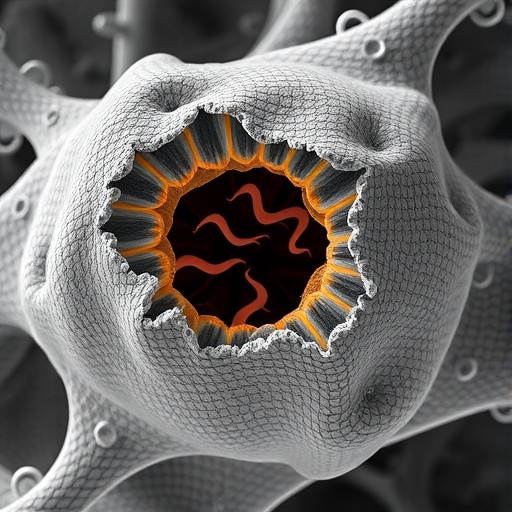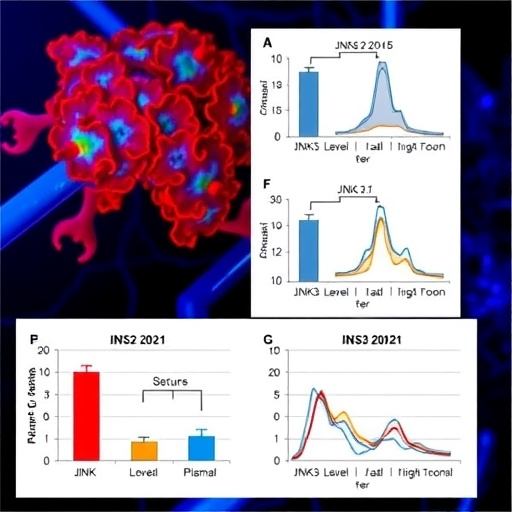In a gripping case report published recently in the International Journal of Legal Medicine, scientists have detailed the forensic and microscopic examination of a high-voltage electrocution incident that occurred at a hydroelectric power plant. The study offers profound insights into the complex nature of electrical wounds, employing cutting-edge scanning electron microscopy combined with energy-dispersive X-ray spectroscopy (SEM-EDS) to unravel the microstructural and elemental composition of the wound sites. This pioneering research not only advances forensic methodologies but also sheds light on the forensic pathophysiology of electrical injuries, a subject often shrouded in diagnostic challenges.
High-voltage electrocution is a significant cause of fatal occupational accidents, especially in industrial settings like hydroelectric plants, where massive electrical currents are harnessed for energy production. Despite the inherent dangers, detailed investigations into the precise mechanisms of tissue damage at the microscopic level remain scarce. The present study bridges this knowledge gap by providing an in-depth analysis of the victim’s external injuries through high-resolution electron microscopy, revealing morphologic alterations invisible to conventional autopsy techniques. This micro-level scrutiny enables forensic experts to differentiate electrical burns from other types of thermal or mechanical trauma accurately.
SEM-EDS is a formidable analytical platform combining the high-resolution imaging capabilities of scanning electron microscopy with elemental analysis via energy-dispersive X-ray spectroscopy. This dual approach facilitates a correlation between morphological damage and elemental deposition patterns, which can occur during electrical injury due to arcing and material fusion. In this groundbreaking case, the researchers harnessed this technology to characterize minute residues and elemental contaminants lodged within the skin layers of the victim, providing indisputable evidence of contact with electrical conductors and exposure to high-energy arcing phenomena.
The victim was a worker engaged in routine maintenance at the hydroelectric plant who suffered fatal injuries upon accidental contact with an energized component. At autopsy, the defining features of the wounds—charred skin areas, distinct punctuate lesions, and thermal coagulation—raised questions about the extent and nature of the electrocution damage versus ancillary trauma. Traditional forensic histology failed to resolve ambiguities presented by superficial charring and postmortem changes, necessitating advanced microscopic analyses for a definitive diagnosis.
Through SEM analysis, the investigators uncovered a layered architecture of electrical injury encompassing epidermal carbonization, subdermal blistering, and cellular matrix disruption. Crucially, EDS spectra revealed trace metals such as copper and aluminum embedded within the wound tissues—elements corresponding to the electric cables and plant machinery—thus corroborating the electrocution scenario at a granular chemical level. This direct linkage between wound composition and electrical source materials is a remarkable forensic achievement, reinforcing the evidentiary power of SEM-EDS in forensic casework.
The study further elucidates the biophysical mechanisms underpinning electrical wound formation. The intense electrical current passing through human tissue prompts rapid resistive heating and electrothermal damage, manifested as protein denaturation, cellular membrane rupture, and coagulative necrosis. Additionally, electrical arcs may vaporize and deposit metallic particles onto the skin surface, which were detected by the elemental analysis. This comprehensive profiling advances our understanding of how high-voltage currents uniquely alter the skin’s microanatomy, differentiating these injuries from other burn types.
One captivating aspect of the research addresses the forensic difficulties in interpreting electrical injuries. Electrocution may produce subtle patterns classified as Lichtenberg figures or “ferning,” but high-voltage accidents often yield chaotic and irregular wounds. This complexity complicates interpretation without robust analytical methods. SEM-EDS emerges as an indispensable tool by visualizing the microfractures, char layers, and contaminant particulates that define an electrical injury uniquely, thereby supporting medico-legal conclusions with scientific rigor.
The implications extend beyond forensic diagnostics. By understanding the exact nature of tissue and elemental alterations in electrical injuries, occupational safety protocols and protective equipment can be devised more effectively to mitigate risks at power plants. This research also suggests pathways for medical examiners to refine post-mortem examinations when electrocution is suspected, ensuring that the subtle marks of electricity-induced trauma do not escape detection amidst competing injury patterns or decomposition artifacts.
Moreover, the multidisciplinary approach combining legal medicine, materials science, and nanotechnology demonstrates the future direction of forensic investigations. Utilizing advanced microscopy to decode injury causation exemplifies a paradigm shift towards integrating physical sciences into forensic pathology. Such integration promises not only enhanced accuracy in cause-of-death determinations but also strengthens judicial processes reliant on incontrovertible scientific evidence in fatal workplace incidents.
This case report underscores the continuing evolution and necessity of novel investigative technologies in forensic pathology, particularly for complex traumatic mechanisms such as electrocution. The authors advocate for widespread adoption of SEM-EDS analyses in forensic laboratories, proposing it as a standard adjunct to traditional autopsy when confronted with electrical injury cases. This call to action portends a significant transformation in how forensic experts approach and elucidate deaths involving electrical hazards.
The evidential clarity this research provides can also support insurance claims, workplace safety audits, and legal proceedings by delivering concrete, quantifiable proof of injury origin and mechanism. With occupational fatalities due to electrical hazards being a persistent concern worldwide, studies like this arm stakeholders with critical knowledge to prevent future tragedies through informed policy and technical interventions.
In summary, this landmark forensic investigation illustrates the power and necessity of marrying sophisticated analytical technologies with classical medico-legal inquiry. By dissecting the microscopic and elemental signatures of electrical wounds, the researchers uncover a narrative often invisible to the naked eye, providing an unprecedented window into the violent physics of electrocution injuries. Their findings promise to redefine the standards of electrical trauma identification in forensic science for years to come.
As industrial electrification escalates globally, the incidence of high-voltage electrocutions may correspondingly rise, intensifying the demand for precise forensic methodologies. This seminal work thus arrives at a timely juncture, aligning technological innovation with human safety imperatives to enhance the interpretation and prevention of fatal electrical accidents. The meticulous characterization detailed herein sets a new benchmark for forensic assessments of electrical injuries.
Ultimately, this research reveals the intricate interactions between electrical energy, human tissue, and industrial materials during electrocution. The SEM-EDS approach transcends mere diagnostic utility, emerging as a crucial investigative lens that deciphers the complex aftermath inscribed upon the skin by lethal electrical currents. Its impact resonates across forensic medicine, occupational health, and legal adjudication, charting a new frontier in understanding and responding to high-voltage trauma.
Subject of Research: High-voltage electrocution injuries at industrial sites and their forensic analysis using SEM-EDS.
Article Title: High-voltage electrocution at a hydroelectric plant: a case report with SEM-EDS analysis of electrical wounds.
Article References:
Pestourie, L., Pefferkorn, E., Josse, C. et al. High-voltage electrocution at a hydroelectric plant: a case report with SEM-EDS analysis of electrical wounds. Int J Legal Med (2025). https://doi.org/10.1007/s00414-025-03628-6
Image Credits: AI Generated
Tags: advanced imaging techniques in forensicsdiagnostic challenges in electrical injurieselemental composition of electrocution injuriesforensic examination of electrical injuriesforensic methodologies in electrical traumaforensic pathophysiology of electrical burnshigh-voltage electrocution analysishydroelectric power plant accidentsmicrostructural analysis of electrical woundsoccupational hazards in industrial settingsSEM-EDS in forensic pathologytissue damage mechanisms in electrocution





